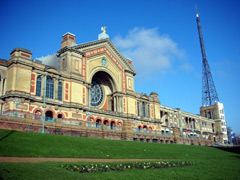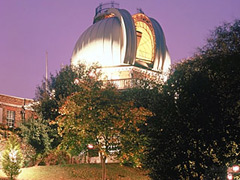


Central London is well trodden, and areas just beyond here like Shoreditch, Camden and Notting Hill are also popular haunts for visitors. But the city has many other neighbourhoods to be explored, all bursting with character. Best of all, they’re all vastly different from each other. Here we pick the best of non-tourist trap London, and tell you how to stay off the beaten path, even within zone 1.
Central London
The West End, the Southbank, Bayswater and the Strand are well known tourist spots, so instead visit Smithfields Market and the Barbican Centre in Clerkenwell, the new, super-trendy eateries in Bermondsey, and the former worker’s warehouses converted to luxury apartments in Wapping, an area which illustrates London’s gentrification like no other.
If museums are your thing, avoid the crowds of large venues - especially at weekends – and check out London’s quirkier offerings. The Magic Circle Museum near Euston is filled with curious objects like the handcuffs used onstage by Harry Houdini, and the library has over 6,000 books devoted to the craft of magic. Once you’ve had your fill of tricks, you can walk to the Cartoon Museum via Gower Street, as it’s less busy than Tottenham Court Road and Southampton Row (the latter in particular has become plagued by chains in recent years). This is where the University College of London is, and most of the buildings are student accommodation. The Cartoon Museum has caricatures, cartoons and comic strips from the 18th century to the present day are on display here. The Charles Dickens Museum (currently closed till December 2012) and the Museum of Freemasonry are within close proximity too.
East London
Dalston is superseding Shoreditch in terms of being hip, with its vintage boutiques, bars and clubs. The Geffrye Museum on Kingsland Road is worth a look, with replicas of typical middle class homes from the last four centuries. Walk or cycle alongside the Regent’s Canal, which passes through here, and runs from the Limehouse Basin all the way to Paddington. Bear in mind however that there is no path between Caledonian Road and Colebrooke Row in Islington.
Stratford is worth a mention because up until very recently it would indeed have been considered “off the beaten track”, however since the decision to the hold the 2012 Games here was announced numerous new restaurants and shops have sprung. It is also home to gargantuan Westfield shopping centre, London’s second after Shepherd’s Bush.
Another riverside route is the Lea Valley Walk, which follows the path of the river Lea from Limehouse all the way up to Waltham Abbey, passing through Clapton (once downtrodden but rapidly gentrifying), Leyton and Walthamstow. The latter has the longest market in London, stretching out for over a mile with cheap clothes, fruit and veg, books, handbags and home wares. The high street is also a great place to buy Asian, Middle Eastern, Caribbean and Polish ingredients. \n\nWest London
West London’s Notting Hill is a famous spot for shopping and sightseeing, however further afield there is still plenty to see and do. Hammersmith may seem like an unlovable mass of concrete at first, but don’t be put off by the busy traffic interchange. King Street is full of interesting restaurants, particularly the closer you get to Ravenscourt Park; try Indian restaurant Potli, Vietnamese Saigon Saigon, and British gastropub The Hampshire Hog. Alternatively the riverside pubs and bars provide a pretty view, especially on sunny days. Riverside Studios shows thought-provoking films as well as theatre and exhibitions.
After a dose of food and culture, take a walk around Ravenscourt Park and Stamford Brook, which are leafy and quiet. Nearby Chiswick feels equally suburban, and is home to Hogarth’s House, the painter’s former country retreat, open to the public and featuring many of his famous prints.
North London
If you fancy perusing some art, head to the Estorick Centre, a few minutes away from Highbury & Islington station. This charming gallery, housed within a Georgian townhouse, has a brilliantly concise collection of works by Giorgio de Chirico and Futurist artists like Umberto Boccioni and Giacomo Balla.
Stamford Hill is home to Europe’s largest population of Hasidic Jews, and there are Jewish bakeries, restaurants and kosher supermarkets aplenty. You could be forgiven for thinking you’ve stepped into a different world as the streets are filled with men dressed in black, sporting top hats and characteristically long sidelocks.
If you feel like heading to the outer reaches of the tube lines, Totteridge & Whetstone on the northern line is a sleepy suburb which boasts having one of the most expensive roads in London. Totteridge Lane is home to many a millionaire footballer, and while you might spot the odd player going about his shopping on the rather sparse high street, it’s unlikely you’ll be able to peer into their houses due to high security fences. There are however plenty of wooded areas around here that are perfect for tranquil walks. A little further east is Alexandra Palace, an iconic building that hosts live music, fairs and exhibitions. It is surrounded by 196 acres of greenery and is located on the top of a hill, so make sure you check out the views.
South London
South London, sometimes overlooked due to lacking a tube in many places, has lots of green open spaces and affluent villagey neighbourhoods with delicatessens, gastropubs and independent shops aplenty. If this appeals, you might like to visit Wimbledon, Blackheath and Dulwich. \n\nOn the other hand there is Brixton, urban and buzzy, with a cacophonous market and lots of ethnic eateries. At night, there’s the O2 Academy Brixton, one of London’s best-loved live music venues, and you can dance till dawn at Electric Brixton and Plan B. The area even has its own currency – the Brixton pound, which helps to support local businesses. You can get some in exchange for conventional pounds at issuing points such as Rosie’s Deli Café and department store Morley’s, and spend them at over 200 places within the area.
Deptford, in south east London, has a small if burgeoning cultural scene due to its proximity to Goldsmith’s University. Next door, well-to-do Greenwich is famous for the Royal Observatory and the National Maritime Museum, but it is also where the Fan Museum is located, which has, as you might expect, a huge collection of fans from the 11th century to today, illustrating the historical importance of this accessory through the ages.
Also…
If you’re seeking places far from the madding crowds, check out London’s quietest spots, and our top 5 places of solitude.


